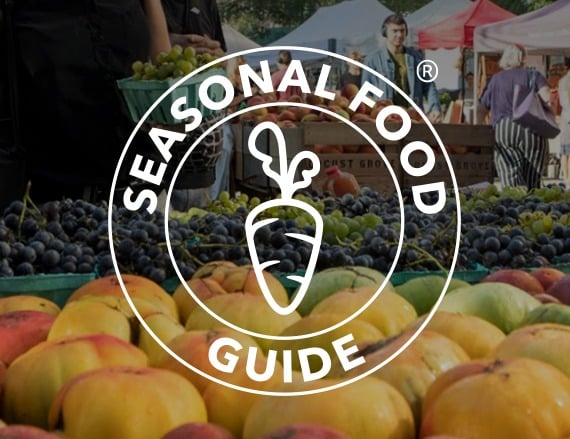Real Food Encyclopedia | Cranberries
There’s a fruit out there that is uniquely American, and it’s not the apple in your pie. It’s cranberries! Unlike many of the fruits and vegetables we eat in the United States, cranberries (Vaccinium macrocarpon) do not have previous lives in faraway lands before coming to North America. Along with Concord grapes, blueberries and a few others, cranberries were born on native soil.
Did you know?
- “Cramberys” were on the menu at the 1703 commencement dinner at Harvard College.
- Homesick for his favorite foods while living in England in the mid-1700s, founding father Benjamin Franklin would ask his wife, Deborah, to ship him cranberries.
- The cranberry became the official state berry of Massachusetts in 1994 and the official state fruit of Wisconsin in 2004.
What to look for when buying cranberries
At first glance, a bowl of fresh cranberries looks like a bunch of baubles waiting to be strung. They come in various shades of red, from faintly pink to crimson.
Raw cranberries pack more of a sour punch than cooked: Pop one in your mouth just as is and you’re in for an astringent wallop. Unless you’re into puckered lips, you’ll need to sweeten them up. In the past decade, white ones have shown up in the marketplace; they are ripe berries picked a few weeks earlier before the pigments have a chance to deepen and typically are less tart. These days, you’re more likely to find white cranberry juice than white fresh cranberries.
Fresh berries should have a sheen. Their color should be bright and opaque versus pale or translucent. Spoiled cranberries will be soft and will not bounce. For the most flavorful cranberries, look a deep, rich color.
Sustainability of cranberries
By their very nature, cranberry bogs require tremendous amounts of water (particularly during harvest). Wisconsin still observes an 1867 “Cranberry Law” that exempts growers from getting permits to build dams to facilitate cranberry production. Nationally, cranberry growers are exempt from several pieces of the Clean Water Act, effectively allowing them to discharge pesticides and synthetic fertilizers into waterways.
But change is coming to the cranberry industry, even if slowly, and it seems that cranberry growers are making inroads on the way to sustainability. The Cape Cod Cranberry Growers’ Association, which represents 400 growers and 14,000 acres, has been experimenting with solar-powered, automated irrigation and low-phosphorus fertilizer to help conserve and protect water in adjacent wetlands and ponds.
Note that climate change is affecting cranberry production.
Pesticides
The USDA has not tested conventional cranberries for pesticide residues since 2006, which explains their absence from the Environmental Working Group’s (EWG) Shoppers Guide to Pesticides in Produce, EWG spokesperson Sara Sciammacco told us.
Still, it’s worth noting what the Pesticide Data Program detected over a decade ago. At that time, 69 percent of sampled cranberries contained residues from a combined total of 13 different pesticides. 44 percent of all samples contained residues from one pesticide; an additional 10 percent contained residues from two pesticides. Of the detected pesticides at the time, three — acephate, chlorpyrifos and methamidophos — belong to a class of highly toxic pesticides called organophosphates.
Seasonality
Fresh cranberries have one season: fall. They are harvested from late September until early November. Oregon and Washington have later harvests, and thus bear more deeply pigmented fruit. If you live in a cranberry growing state, you may be lucky enough to find fresh ones at farmers’ markets and farm stands. Most of us will find them in supermarket produce aisles into mid-December.
Geography
According to USDA statistics, Wisconsin produced 60 percent of the nation’s 8-million-barrel-strong haul in 2012, followed by Massachusetts, which produced about one-fourth of the nation’s total. It is the number one fruit crop for Massachusetts. Smaller yields come from New Jersey, Oregon and Washington. In Canada, British Columbia is the most cranberry-prolific part of the country. Most recently, Ocean Spray has expanded its bog operations to Chile.
Botanically, cranberries are Vaccinium macrocarpon, a member of the Heather (Ericaceae) family. Relatives include blueberries and bilberries. Neither bush nor tree, the American cranberry is an evergreen vine, with short, woody runner stems that creep along the ground. Cranberries’ ideal habitat is a low swampy bog and acidic, sandy soil.
Although they don’t grow under water, cranberries harvested for processing (juice, dried fruit, etc.) are done so by intentionally flooding the bogs (or “marshes”). The dislodged berries float to the top of the bog and are gathered using big scoops. “Dry” harvests are done for fresh berries, which represent just five to 10 percent of annual cranberry crops. (Most Americans get their 2.3 pound annual cranberry fill in their juice glass.)
Eating cranberries
Storing
Because fresh cranberries only come once a year for just a short few weeks, you can buy several bags and stash them in the freezer for later. Cranberries are lovely all winter long!
For short-term use, store fresh cranberries in the refrigerator in the bag in which they were packed or into a well-ventilated bowl or colander. Cranberries do not like too much moisture.
Cooking
Just because most Americans drink most of their annual cranberry fill doesn’t mean they aren’t delicious to eat.
There’s also no need to be scared of making homemade cranberry sauce — which takes about a half an hour, start to finish.
Dried cranberries can be used not just for granola and snacking but for these biscotti or a twist on oatmeal-raisin cookies. Throw a bunch into rice pilafs or other grain dishes for a tart punch.
Nutrition and health
Raw, fresh cranberries are a good source of Vitamin C and fiber. They are also a source of anthocyanins (the source of the red pigment), which have been linked to lowered risk of Alzheimer’s disease, heart disease and diabetes.
Unsweetened cranberry juice contains 30 grams of sugar per cup, but is it an excellent source of Vitamin C and a good source of Vitamin A.

